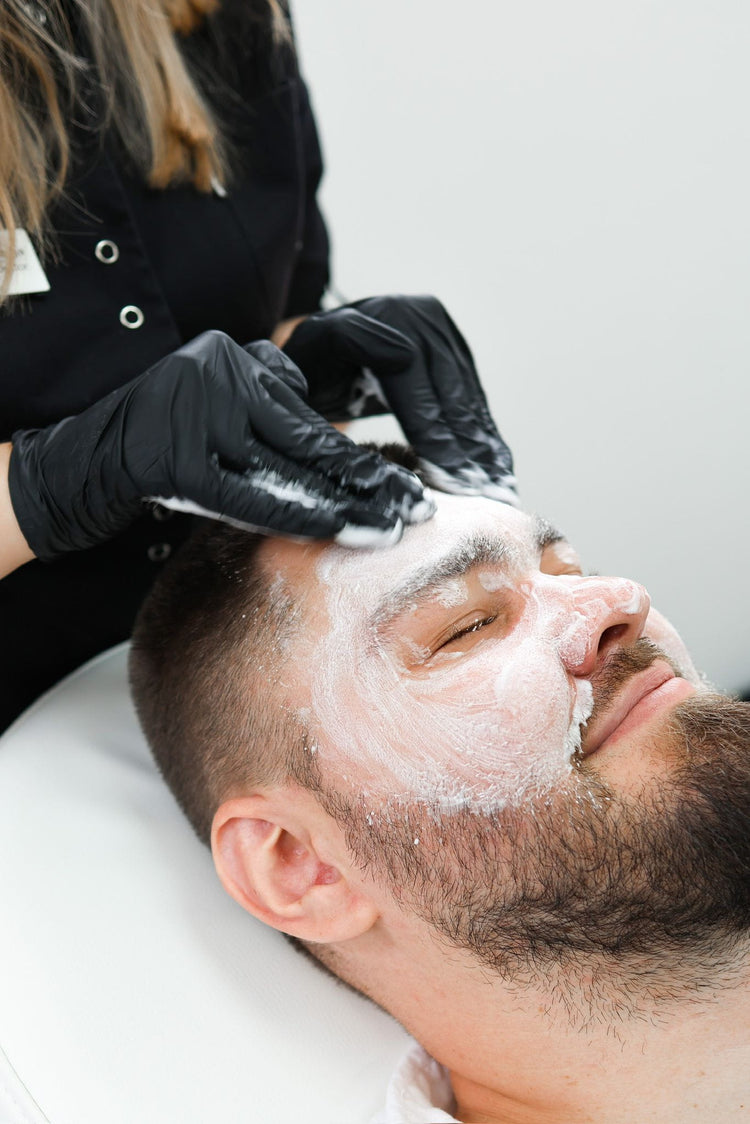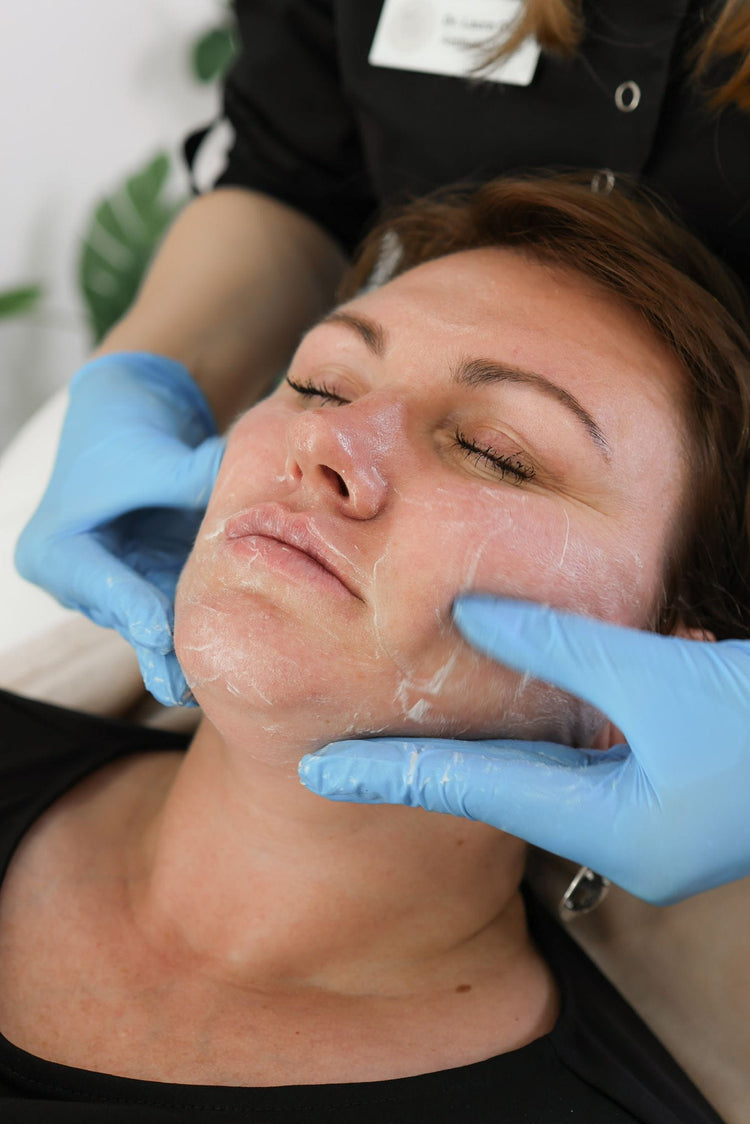Understanding Hyperpigmentation
Hyperpigmentation, characterized by darkened patches on the skin, can be caused by various factors including sun exposure, hormonal changes, and inflammation. Understanding its underlying causes and available treatments is crucial for effectively addressing this common skin concern.

Types of Hyperpigmentation
There are several types of hyperpigmentation, each with unique characteristics and contributing factors. Post-inflammatory hyperpigmentation (PIH) occurs after skin injury or inflammation, such as acne, eczema, or burns. Sunspots (solar lentigines) are flat, brown spots caused by prolonged sun exposure. Melasma, often triggered by hormonal fluctuations, presents as symmetrical brown patches on the face. Freckles are small, flat, light brown spots that appear due to genetic predisposition and sun exposure.
During a skin treatment consultation for hyperpigmentation, it’s important to discuss your medical history, including any medications or supplements you take. Provide detailed information about your skincare routine, sun exposure habits, and the type of hyperpigmentation you are experiencing. A qualified dermatologist can then recommend the most appropriate treatment plan based on your individual needs.
Causes of Hyperpigmentation
Understanding the specific type of hyperpigmentation you’re dealing with is key to finding effective solutions. Share details about the location, appearance (shape, color), and duration of the pigmentation with your dermatologist. This information will help them determine the most likely cause and recommend the most suitable treatment.
Be prepared to discuss your sun exposure habits. Protection from the sun is crucial for preventing further hyperpigmentation and fading existing discoloration. Your dermatologist can advise on appropriate sun protection strategies, including sunscreen types and application frequency.
If you use any topical skincare products, especially those containing retinol or exfoliating agents, be sure to mention them. These ingredients can sometimes exacerbate hyperpigmentation or interfere with certain treatments.
Preparing for Your Consultation
Before your skin treatment consultation for hyperpigmentation, take some time to gather information about your specific condition and medical history. This will help you communicate effectively with your dermatologist and ensure they can recommend the most suitable treatment plan.
Gather Information About Your Skin History
Before your consultation, gather information about your skin history. Note down any medications or supplements you’re taking, as these could influence treatment options.
Detail your skincare routine, including products used and their frequency of application. Be specific about your sun exposure habits – how often you’re outdoors, the time spent in the sun, and whether you use sunscreen regularly.
Document the type of hyperpigmentation you’re experiencing. Describe its location, appearance (shape, color), and duration. If possible, take photos to showcase the pigmentation.
Take Notes on Current Products and Treatments
Before your consultation, gather information about your skin history. Note down any medications or supplements you’re taking, as these could influence treatment options.
Detail your skincare routine, including products used and their frequency of application. Be specific about your sun exposure habits – how often you’re outdoors, the time spent in the sun, and whether you use sunscreen regularly.
Document the type of hyperpigmentation you’re experiencing. Describe its location, appearance (shape, color), and duration. If possible, take photos to showcase the pigmentation.
Prepare a List of Questions
Before your consultation, gather information about your skin history. Note down any medications or supplements you’re taking, as these could influence treatment options.
Detail your skincare routine, including products used and their frequency of application. Be specific about your sun exposure habits – how often you’re outdoors, the time spent in the sun, and whether you use sunscreen regularly.
Document the type of hyperpigmentation you’re experiencing. Describe its location, appearance (shape, color), and duration. If possible, take photos to showcase the pigmentation.
During the Consultation
To effectively address hyperpigmentation during a skin treatment consultation, thorough preparation is key.
Discuss Your Concerns Openly with Your Esthetician or Dermatologist
During your consultation, openly discuss your concerns with your esthetician or dermatologist. Provide a comprehensive history of your skin, including any relevant medical conditions, medications, and supplements you use. Detail your skincare routine, highlighting the products you utilize and their frequency of application.
Be specific about your sun exposure habits, such as how often you spend time outdoors, the duration of your sun exposure, and whether or not you consistently use sunscreen.
Clearly describe the type of hyperpigmentation you’re experiencing. Note its location on your skin, the shape, color, and how long it has been present. If possible, bring photos to illustrate the pigmentation.
Describe the Appearance and Location of Your Hyperpigmentation

During your consultation, be prepared to describe the appearance of your hyperpigmentation in detail. Tell your esthetician or dermatologist where it is located on your skin, whether it’s flat or raised, and its shape – for example, if it’s round, oval, or irregular. Describe the color as well; is it light brown, dark brown, or something else?
Also mention how long you’ve had the hyperpigmentation and if it has changed in appearance over time.
Ask About Treatment Options and Expected Outcomes
During your consultation, be sure to ask about the different treatment options available for your specific type of hyperpigmentation. Inquire about the expected outcomes of each treatment, including the timeframe for seeing results and the potential for side effects.
Don’t hesitate to ask questions about the pros and cons of each option, as well as any downtime or recovery period required. Understanding the details of each treatment will help you make an informed decision about the best course of action for your skin.
After the Consultation
A thorough consultation is essential for effectively addressing hyperpigmentation.
Before meeting with your esthetician or dermatologist, gather information about your skin history, including any medications or supplements you take. Detail your skincare routine, sun exposure habits, and the type of hyperpigmentation you’re experiencing. Describing its location, appearance (shape, color), and duration will help them determine the most appropriate treatment plan.
Follow the Recommended Skincare Routine
After your consultation, diligently follow the recommended skincare routine provided by your esthetician or dermatologist. This may include using specific products like vitamin C serums, brightening creams, or chemical peels, as well as incorporating sun protection measures into your daily regimen.

Consistency is key when addressing hyperpigmentation. Sticking to the prescribed routine and protecting your skin from further sun exposure will contribute to noticeable improvement over time.
Be Patient and Consistent with Treatment
After the consultation, diligently follow the recommended skincare routine provided by your esthetician or dermatologist. This may include using specific products like vitamin C serums, brightening creams, or chemical peels, as well as incorporating sun protection measures into your daily regimen.
Consistency is key when addressing hyperpigmentation. Sticking to the prescribed routine and protecting your skin from further sun exposure will contribute to noticeable improvement over time.
- Use sunscreen daily with an SPF of 30 or higher, even on cloudy days.
- Avoid excessive sun exposure during peak hours (10 a.m. to 4 p.m.).
- Wear protective clothing, such as hats and sunglasses, when spending time outdoors.
Schedule Follow-Up Appointments as Needed
After the consultation, diligently follow the recommended skincare routine provided by your esthetician or dermatologist. This may include using specific products like vitamin C serums, brightening creams, or chemical peels, as well as incorporating sun protection measures into your daily regimen.
Consistency is key when addressing hyperpigmentation. Sticking to the prescribed routine and protecting your skin from further sun exposure will contribute to noticeable improvement over time.
- Use sunscreen daily with an SPF of 30 or higher, even on cloudy days.
- Avoid excessive sun exposure during peak hours (10 a.m. to 4 p.m.).
- Wear protective clothing, such as hats and sunglasses, when spending time outdoors.
Book your skin consultation with Dr. Laura Geige at It’s Me & You Clinic today
- How To Use Your Skin Treatment Consultation To Address Hyperpigmentation - September 25, 2025
- Gummy Smile Treatment – Gum Contouring Near Kingswood, Surrey - September 24, 2025
- Filler For Recessed Chin In Worcester Park, Surrey - September 23, 2025

